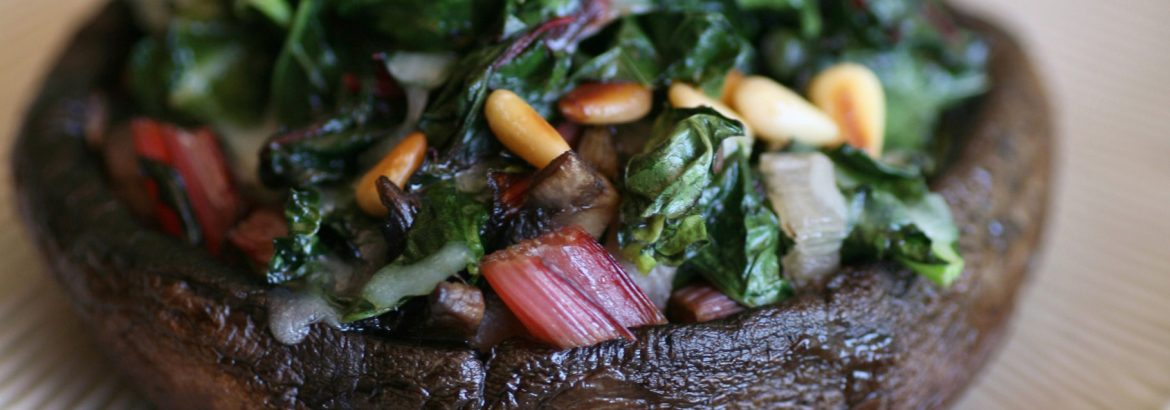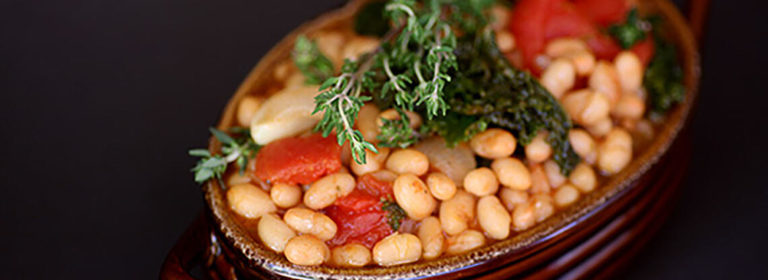Plant-based offerings continue their reign as one of the hottest food trends of 2022. That’s due in part to rising meat prices up 20% year to year. But what most people consider to be “plant based” is not garnering all the attention.
Instead of processed meat alternatives, chefs are going back to their roots by utilizing whole plants as much as possible. There’s the need to be authentic, and fresh vegetables and fruits provide that transparency. What’s new is that they’re adding global flavors and techniques to make them even more enticing for diners.
For example, one of the most buzzed-about trends is Mediterranean cuisine, and plant-based dishes have been getting much play on menus, says Nicholas Gonring, the Corporate Consulting Chef for Gordon Food Service (overseeing its North American culinary department). Over the course of several months in 2021, he visited 72 new restaurant concepts in Chicago and New York, and 16 of them focused on Mediterranean fare. He cautions not to think of it as monolithic because of the 20 different countries within the region focusing on their individual cultures and cuisines.
“[Many] people think Mediterranean fare is Greek or Italian, but it’s so much more than that,” explains Gonring. “It’s North Africa, Levant, the Middle East all the way to the Balkan Peninsula, as well as parts of Spain and lower parts of France. There are so many cultures that lean into Mediterranean cuisine and their flavors work well mashed up into a lot of different concepts.”
How to get started? Markon spotlights several easy-to-make, chef-inspired recipes to encourage operators to experiment with Mediterranean flavors. For starters, hummus-filled tomato appetizers get a bite of crisp flavor from jicama sticks and green onions. Also, a dash of zaatar spice – a blend of dried herbs like oregano, marjoram or thyme, and toasted earthy spices like cumin and coriander – livens up a heaping of seasonal vegetables. And the classic North African shakshuka egg dish gets an upgrade with fresh shallots, red bell peppers, basil, and parsley. It’s so incredibly hearty that it may be served for breakfast, lunch, or dinner.
While most Mediterranean dishes are hearty and full of flavor, says Gonring, they’re still overall healthy.
“That’s the genius about why it’s such a promising cuisine for people to get immersed into now,” continues Gonring. “Consumers want to have more of a resurgence of health, and Mediterranean cuisine has always been associated with wellness. It’s always the number one recommended diet.”
He adds that the new concepts he’s visited in Chicago and New York are modern with fine dining accents. “It’s giving people a whole new mindset of what Mediterranean cuisine is all about,” he says.
At the high-volume restaurant Grill 55, located inside the Holiday Inn & Suites Windsor in Windsor, Ontario, chef Nehru Natkunam serves stir-fried or sauteed seasonal vegetables, including cauliflower, broccoli, peppers, and mushrooms, with global dishes like jerk chicken and handmade pastas. For some guests, he says, the vegetables are the star due to their freshness.
“Many times, customers want them as the entrée,” he says. “We don’t really do anything creative with them because the way we serve them is already a hit with customers. We just ensure that they’re the freshest offerings.”
Looking for a few fun and simple ways to enhance plant-forward dishes? Markon’s take on a Smoky Grilled Cheese delicately layers sauteed blended greens between grilled Challah bread. Sauteed collard greens again help bring forth Southern-inspired flavors of cornmeal-fried shrimp and mashed sweet potatoes.
Chef Kyle Hash aims for a similar approach with vegetable-forward entrées at 28 North Gastropub, in Melbourne, Florida. While he’s experimented in the past with dishes like jackfruit “meatloaf” seared on a flat grill, he prefers to present vegetables as close to their original state as possible.
“We’re leaning more towards treating mushrooms and the accompanying components as much like we would a high-end protein as possible,” explains Hash. “Good sear or grill, possible baste in butter and thyme, lots of garlic. We’ve mostly stuck to traditional cooking techniques and focused on doing them well.”
In the end, Hash asserts, his goal is to get people who love meat to order the vegetarian dishes and not miss the meat.
“We get that by treating our king trumpet mushrooms like you would a quality steak and sear the heck out of it and finish it in the oven,” he describes. “Also, we try to use the best quality vegetables we can find and try to attack them with any and all cooking methods. Pickling, fermenting, roasting, frying, pureeing…and seasoning them incredibly well.”
Audarshia Townsend
About Markon
Markon Cooperative, Inc. brings a fresh approach and thinking to all of its premium farm-to-table produce so foodservice operators can bring the freshest ideas to their consumers. Based in Salinas, California, Markon serves as the produce purchasing, logistics, information, and marketing partner for its five member distributors (Ben E. Keith Foods, Gordon Food Service, Gordon Food Service Canada, Nicholas & Company, and Shamrock Foods) and their North American foodservice customers. Learn more about Markon’s commitment to providing the highest-quality, safest, and freshest produce at Markon.com.




